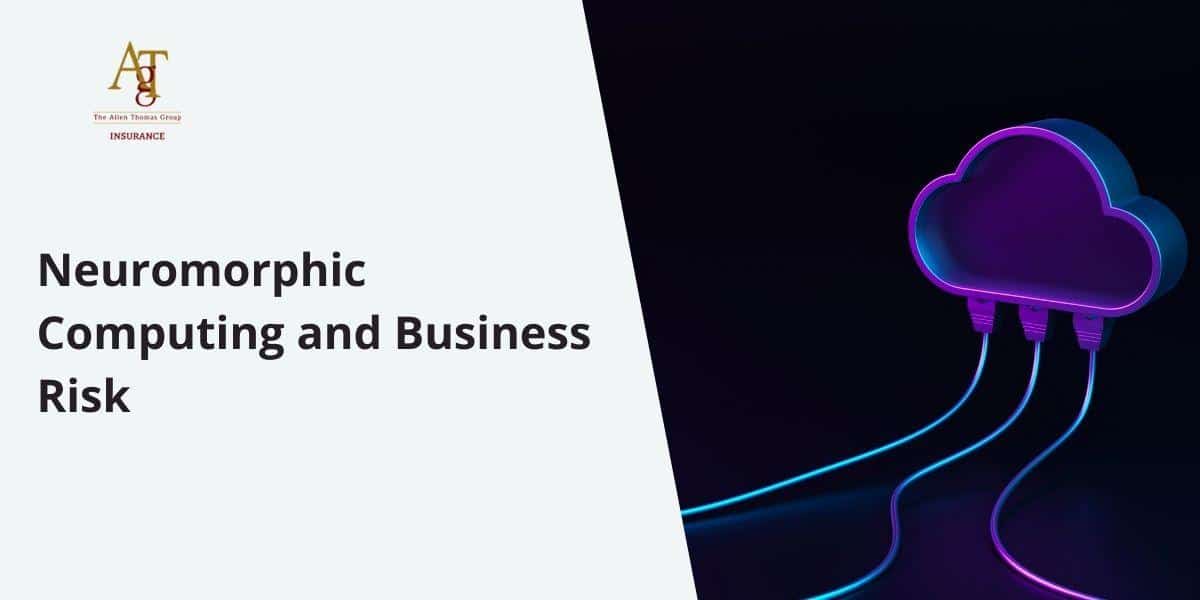So you’re a business owner, and you’ve just heard about the incredible potential of neuromorphic computing.
It’s like giving your company a super-intelligent brain, capable of processing data faster than the blink of an eye.
But, what about the risks?
Can you trust this brain to make the right decisions for your business?
That’s where we come in.
At The Allen Thomas Group, we’re here to help you build out the exciting but sometimes unpredictable world of neuromorphic computing and AI decision-making.
We’ll be your guide, your partner, and your safety net, ensuring that your business can harness the power of this technology without losing sleep over the risks.
Understanding the Fundamentals of Neuromorphic Computing
Brain-Inspired Computing: A Paradigm Shift
Imagine if your computer could think like a human brain.
That’s the essence of neuromorphic computing – a paradigm shift in the world of AI that mimics the structure and function of the human brain to enable more efficient and adaptive data processing.
It’s like giving your business a neural network of its own, complete with spiking neurons and memristive devices that can perform complex computations while sipping energy like a fine wine.
Core Technology Concepts Involved
To truly appreciate the potential of neuromorphic computing, let’s break down its core technology concepts into bite-sized pieces:
- Spiking Neural Networks: These biologically-inspired networks are like a symphony of neurons, firing off signals to transmit information and enable lightning-fast, event-driven processing.
- Memristive Devices: Imagine if your computer’s memory could also process information. That’s the magic of memristive devices – the hardware heroes of neuromorphic computing.
- Synaptic Plasticity: Just like our brains, neuromorphic systems can learn and adapt over time, thanks to the ability of neural connections to strengthen or weaken. It’s like your business’s AI is constantly learning and growing.
- Event-Driven Processing: Neuromorphic computing is the master of multitasking, processing data only when needed, like a chef who knows exactly when to flip a burger for maximum flavor and efficiency.

Neuromorphic Computing in Business Applications
AI-Powered Business Analytics
Picture a world where your business can make data-driven decisions at the speed of thought.
That’s the promise of neuromorphic computing in business analytics.
With its ability to learn, adapt, and process vast amounts of data in real-time, neuromorphic AI is like having a crystal ball for your business, helping you uncover valuable insights and stay ahead of the competition.
Neuromorphic Data Processing
Imagine if your business could process and analyze complex, high-dimensional data sets with the ease of a seasoned chef chopping vegetables. That’s the power of neuromorphic systems and their parallel processing capabilities.
From finance to healthcare to manufacturing, businesses can unlock a competitive edge by efficiently processing and analyzing large volumes of data.
Edge AI with Neuromorphic Chips
Neuromorphic chips are like giving your business a portable brain, enabling AI processing at the edge and reducing latency while improving data privacy. It’s like having a personal assistant that can make split-second decisions without needing to phone home to the mothership.
This is particularly valuable for businesses in industries such as transportation and logistics, where real-time decision-making is the name of the game.
Cognitive Computing Systems for Decision Support
Imagine having a wise old mentor who can process natural language, understand context, and reason like a human, all while processing data at the speed of light. That’s the potential of neuromorphic computing in powering cognitive computing systems for intelligent decision support.
By assisting in complex decision-making processes and freeing up valuable human resources, these systems are like a secret weapon for businesses looking to gain a competitive edge.
Industries Poised for Neuromorphic Computing Adoption
Several industries are like kids in a candy store when it comes to the potential of neuromorphic computing:
- Technology Companies: Tech firms can leverage neuromorphic AI to develop innovative products and services that make our jaws drop, like intelligent virtual assistants that can read our minds (okay, maybe not quite, but you get the idea).
- Financial Services: Neuromorphic computing is like a superhero for financial institutions, helping them detect fraud, assess risk, and make real-time trading decisions faster than you can say “bull market.”
- Healthcare Providers: From medical diagnosis to drug discovery to personalized treatment planning, neuromorphic AI is like having a team of medical geniuses on speed dial for healthcare providers.
- Manufacturing Firms: Neuromorphic systems are the ultimate efficiency gurus for manufacturing firms, optimizing production processes, predicting equipment failures, and enabling flexible automation that would make even the most seasoned factory foreman jealous.
- Transportation and Logistics Businesses: Autonomous vehicles, optimized route planning, and streamlined supply chain management – neuromorphic computing is like a GPS for transportation and logistics businesses, guiding them to success with real-time decision-making.
- Retail and E-commerce Enterprises: Neuromorphic AI is like having a personal shopper for every customer, helping retail and e-commerce businesses personalize experiences, predict demand, and optimize inventory management with uncanny accuracy.
- Energy Sector Organizations: From optimizing energy distribution to predicting maintenance needs and improving grid stability, neuromorphic systems are like a renewable energy source for the energy sector’s efficiency and reliability.

Evaluating the Risks of Neuromorphic Computing for Businesses
The Challenge of Unpredictable AI Decision-Making
While neuromorphic computing is like a superhero for businesses, even superheroes have their kryptonite. In this case, it’s the unpredictable nature of AI decision-making.
Machine learning algorithms that power neuromorphic systems are like teenagers – they can learn and adapt, but sometimes in ways that leave us scratching our heads and wondering, “What were they thinking?”
Some key factors contributing to AI unpredictability include:
- Algorithmic Bias: If the data used to train neuromorphic AI is biased, it’s like feeding a child a steady diet of junk food – the results may not be what you hoped for, and could even be harmful.
- Lack of Transparency: The complex nature of neuromorphic networks can make understanding their decision-making process feel like trying to solve a Rubik’s cube blindfolded – challenging and frustrating.
- Unintended Consequences: As neuromorphic AI systems become more autonomous, they may make decisions that have unintended consequences for businesses and society, like a butterfly flapping its wings and causing a tornado halfway around the world.
Identifying Potential Risk Factors
To effectively manage the risks associated with neuromorphic computing, businesses need to put on their detective hats and identify potential risk factors, such as:
- Hardware Failures: Just like any machine, the specialized hardware used in neuromorphic systems can break down or malfunction, causing headaches and heartaches for businesses.
- Software Bugs: Neuromorphic AI software can have bugs or vulnerabilities that can lead to errors or security breaches.
- Data Quality Issues: Poor quality or insufficient training data can result in AI decision-making that’s about as accurate as a weather forecast for next year – not very.
- Cybersecurity Threats: Neuromorphic systems can be targeted by cyber attackers looking to manipulate or exploit AI for their own nefarious purposes, like a villain in a superhero movie trying to turn the hero’s powers against them.
Safeguarding Your Business with Customized Insurance Solutions
Essential Insurance Considerations
To protect your business from the risks posed by neuromorphic computing and AI decision-making, you need insurance coverage that’s tailored to your needs, like a bespoke suit.
At The Allen Thomas Group, we offer specialized insurance products that can help safeguard your business, such as:
- AI Liability Insurance: This type of insurance is like a safety net for your business, covering losses arising from errors, malfunctions, or unintended consequences of AI systems.
- Cyber Insurance: Cybersecurity threats targeting neuromorphic AI can be mitigated through comprehensive cyber insurance policies, like a firewall for your finances.
- Business Interruption Insurance: If a neuromorphic system failure leads to downtime for your business, this insurance can help cover lost revenue and expenses, like a spare tire for your business’s journey.
- Professional Indemnity Insurance: For businesses providing neuromorphic computing services or advice, professional indemnity insurance offers protection against claims of negligence or errors, like a shield for your reputation.
Addressing Regulatory Compliance and Ethical Concerns
AI Governance Frameworks
As neuromorphic computing becomes more prevalent, businesses must navigate an evolving regulatory landscape, like a sailor charting a course through shifting winds and tides.
Adopting AI governance frameworks can help ensure compliance with laws and regulations while promoting ethical AI practices.
Data Protection Laws
Neuromorphic systems process vast amounts of data, making compliance with data protection laws, such as the General Data Protection Regulation (GDPR) and the California Consumer Privacy Act (CCPA), a critical concern for businesses.
Industry-Specific Regulations
Certain industries, such as healthcare and finance, have additional regulatory requirements that businesses must adhere to when implementing neuromorphic computing solutions.
Explainable AI (XAI) for Transparency
To address concerns around transparency and accountability, businesses can leverage explainable AI (XAI) techniques.
Deploying Effective Risk Mitigation Strategies
Redundancy Systems and Fail-Safe Mechanisms
Implementing redundancy systems and fail-safe mechanisms is like giving your business a backup parachute – it may not be the most exciting thing, but it can save the day if something goes wrong.
These measures ensure that critical functions remain operational even if one component fails, reducing the impact of hardware or software issues.
Human Oversight and Continuous Monitoring
Maintaining human oversight and conducting continuous monitoring of neuromorphic AI systems is like having a wise old owl keeping watch over your business.
Regular audits and performance evaluations can help identify issues before they escalate, like a doctor catching a disease in its early stages.
AI Interpretability Measures
AI interpretability measures are like a decoder ring for your neuromorphic systems, helping you understand how they make decisions.
This may involve visualizing neural network activations, analyzing feature importance, or using counterfactual explanations to identify factors influencing AI decision-making – like a detective piecing together clues to solve a mystery.
Performance Metrics and Reliability Testing
Establishing clear performance metrics and conducting thorough reliability testing is like putting your neuromorphic AI systems through a series of obstacle courses – you want to make sure they can handle whatever challenges come their way.
This may include benchmarking against traditional AI approaches, stress testing under various conditions, and validating results against ground truth data.
Looking Ahead: The Future of Neuromorphic Computing and Business Risk
Integration with Emerging Technologies
As neuromorphic computing advances, it will likely integrate with other emerging technologies, like pieces of a puzzle coming together to form a bigger picture.
Some exciting possibilities include:
- Internet of Things (IoT): Neuromorphic chips can enable efficient AI processing on IoT devices.
- Brain-Computer Interfaces (BCIs): Neuromorphic computing may play a role in developing more intuitive and responsive BCIs.
- Neuromorphic Sensors: Biologically-inspired sensors that mimic human senses could enhance the capabilities of neuromorphic systems in fields like robotics and autonomous vehicles, like giving machines the gift of sight, sound, and touch.
Advancements in AI Decision-Making Capabilities
Ongoing research in neuromorphic computing aims to improve AI decision-making capabilities, making systems more robust, adaptable, and reliable – like a superhero learning new powers and refining their abilities.
This may involve developing new learning algorithms, incorporating uncertainty estimation, or enabling transfer learning between different tasks and domains, like a skilled artisan applying their expertise to new projects.
Evolution of Insurance Products for Emerging Technologies
As neuromorphic computing and other emerging technologies mature, insurance products will need to evolve to keep pace with new risks and challenges.
Insurers may develop more specialized policies, offer risk assessment services, or partner with technology providers to better understand and underwrite neuromorphic AI risks, like a tailor crafting a custom suit for a new body type.

Partnering with The Allen Thomas Group for Comprehensive Protection
Tailored Insurance Policies
At The Allen Thomas Group, we specialize in crafting tailored insurance policies to meet the unique needs of businesses working with neuromorphic computing and AI.
Our policies cover various aspects of business risk, including:
- General Liability: We protect you against third-party claims of bodily injury, property damage, or personal injury arising from your business operations, like a shield against lawsuits.
- Property Insurance: We cover your physical assets, such as buildings, equipment, and inventory, in the event of damage or loss – like a safety blanket for your business’s belongings.
- Errors and Omissions (E&O): We protect you against claims of negligence, mistakes, or oversights in the professional services you provide, like a life jacket for your reputation.
- Directors and Officers (D&O) Liability: We cover your company directors and officers in the event of legal action related to their management decisions, like a helmet for your leadership team.
Risk Assessment and Ongoing Support
Our team of experienced risk management professionals is like a group of wise mentors, ready to guide you through the complex world of neuromorphic computing and AI risks.
We can help you assess your business’s specific risks, recommend appropriate insurance coverage, and provide ongoing support to ensure your insurance needs evolve alongside your business and the ever-changing technological landscape.
By partnering with The Allen Thomas Group, you can access comprehensive insurance solutions and expert guidance to safeguard your business, like a lighthouse guiding you to safe harbor.
Together, we can help you embrace the benefits of neuromorphic computing with confidence.
Get The Right Insurance Coverage To Protect Your Companies Future
Resources Used For The Article
- https://arxiv.org/pdf/1705.06963
- https://www.nature.com/articles/nnano.2012.240
- https://www.frontiersin.org/journals/neuroscience/articles/10.3389/fnins.2011.00073/full
- https://www.science.org/doi/10.1126/science.1254642
- https://ieeexplore.ieee.org/document/8259423
- https://cacm.acm.org/research/cognitive-computing
- https://www.semanticscholar.org/paper/The-global-landscape-of-AI-ethics-guidelines-Jobin-Ienca/35ebed28c967acbfe38fa757f4e7023d075beaeb
- https://onlinelibrary.wiley.com/doi/full/10.1609/aimag.v40i2.2850
Author



























